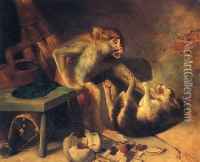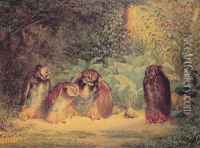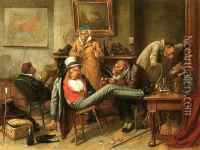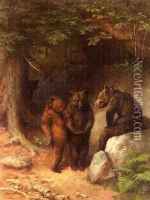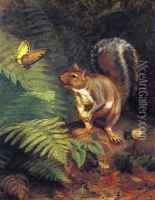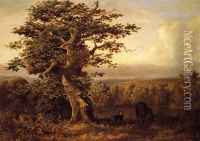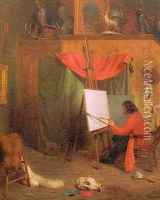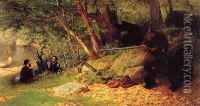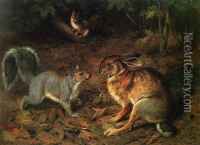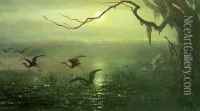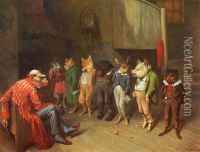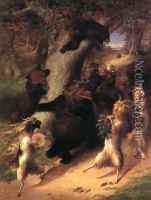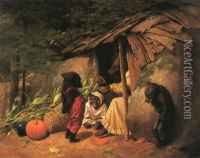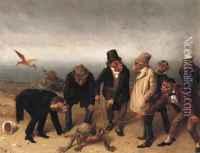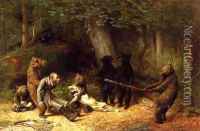William Holbrook Beard Paintings
William Holbrook Beard was an American painter born on April 13, 1824, in Painesville, Ohio. Known for his whimsical paintings of animals, particularly bears, Beard developed a unique style that often anthropomorphized animals to satirize human behavior and society.
Beard began his artistic career at a relatively young age, showing an early interest in painting. Initially self-taught, he later studied with his older brother, James Henry Beard, who was also a painter. In the early stages of his career, Beard traveled in the United States and Europe, which exposed him to various artistic styles and techniques. His travels around Europe included a significant period in Italy, which influenced his work, although Beard would eventually develop a style quite distinct from European traditions.
After returning to the United States, he settled in New York City in the mid-19th century, where he became associated with the Hudson River School, although his work did not entirely conform to the School's focus on detailed landscapes. Instead, Beard found his niche in genre painting, particularly works that featured animals in human-like scenarios. His most famous works include 'The Bear Dance' and 'Dancing Bears,' which depict groups of bears engaging in human activities with a satirical edge. These paintings not only reflect a humorous take on human society but also offer a critique of the excesses of the Gilded Age and the follies of human vice.
Throughout his career, Beard's work was well-received, and he gained recognition as a member of the National Academy of Design in 1861. He was also a founding member of the American Society of Painters in Water Colors. Beard continued to paint and exhibit his works until his later years.
William Holbrook Beard passed away on February 20, 1900, in New York City. His legacy lives on through his humorous and often thought-provoking paintings that continue to engage viewers with their wit and social commentary. Beard's work remains a part of important collections and has been displayed in various museums and galleries, reflecting his enduring influence on American art.

